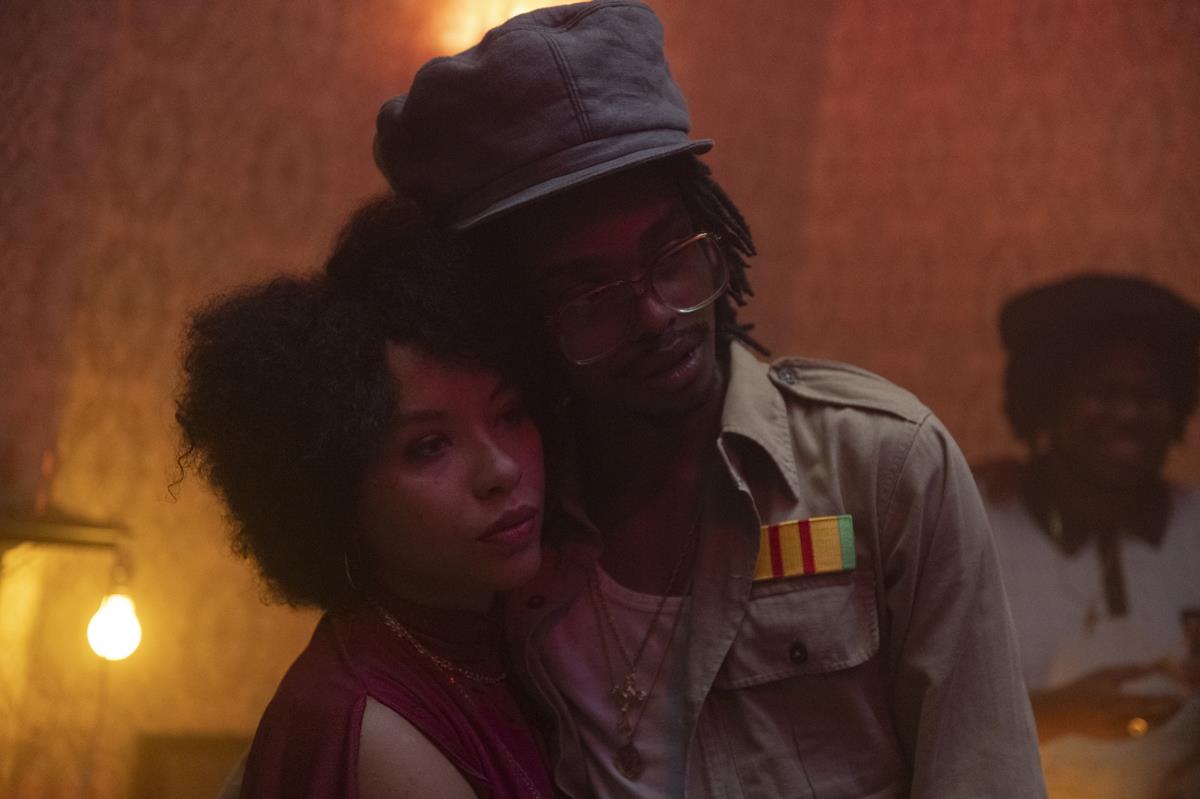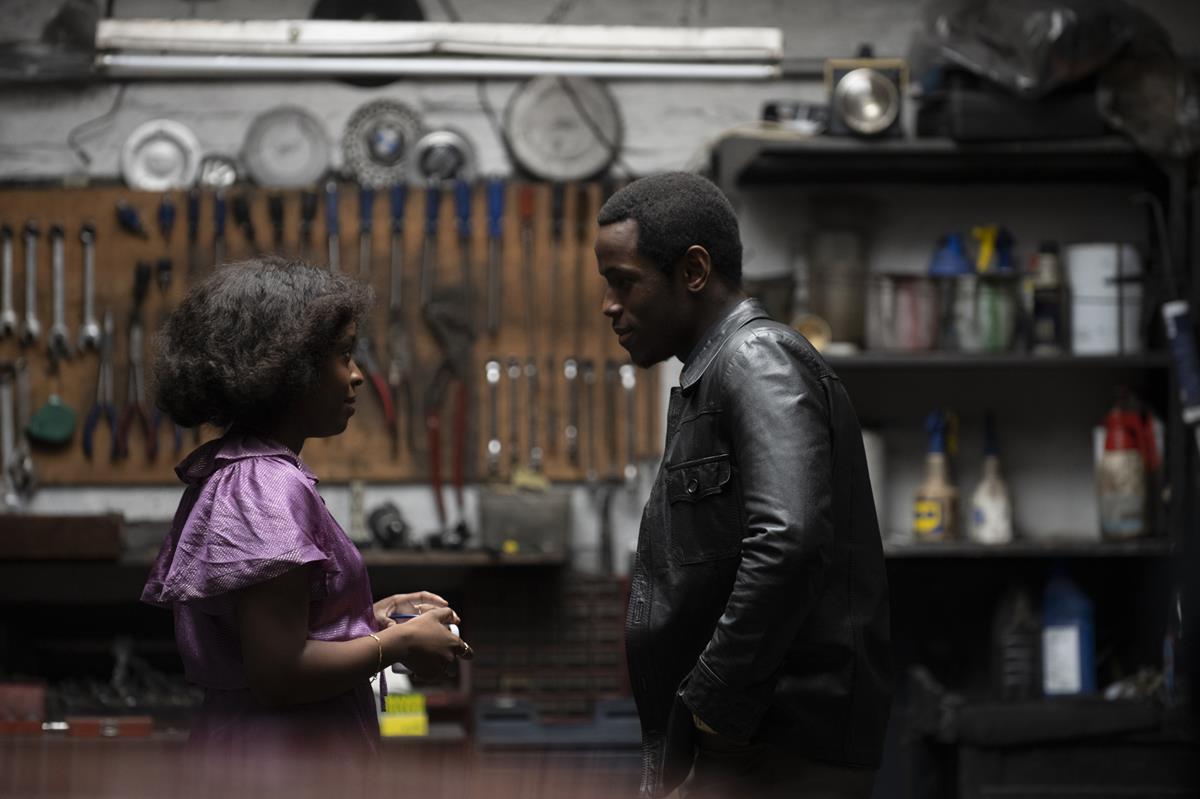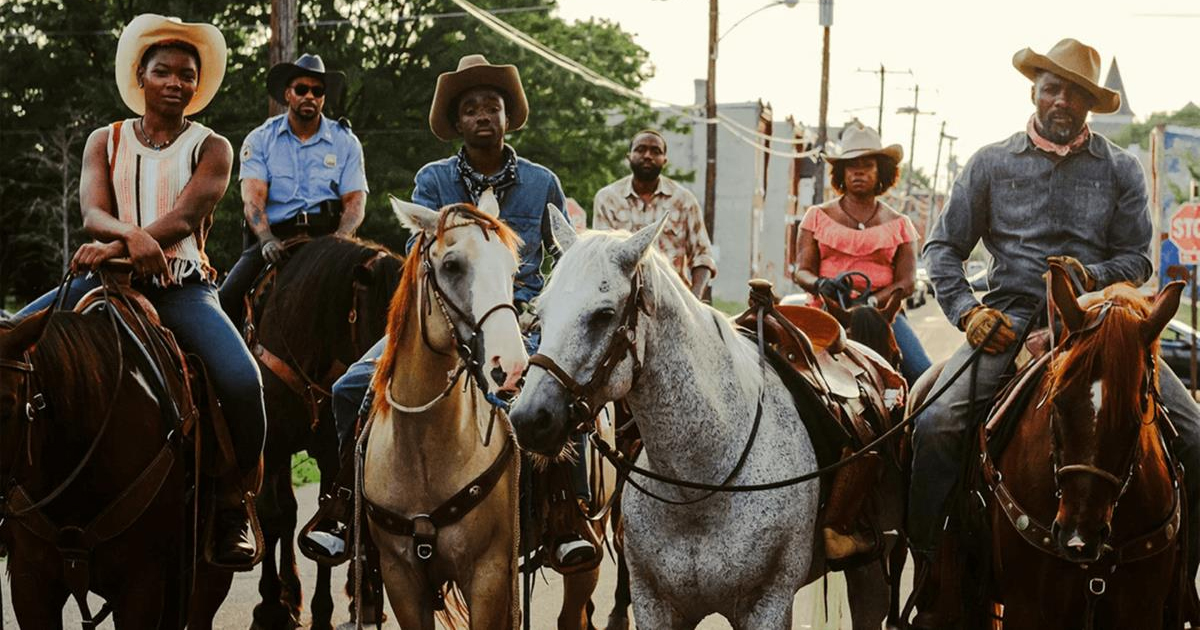
With its moody visuals and intoxicating choreography, Lovers Rock is part of the Small Axe anthology, which comprises five original films by Academy Award, BAFTA, and Golden Globe-winning filmmaker Steve McQueen (Hunger, Shame, 12 Years A Slave, Widows). Set from the late 1960s to the mid-1980s, each film tells a different story involving London’s West Indian community, whose lives, despite rampant racism and discrimination, have been shaped by their own force of will.
An ode to the reggae genre called “Lovers Rock,” and to the people who found passion and freedom in its sound, Lovers Rock tells a fictional story of young love at a house party in west London in 1980. Amarah-Jae St. Aubyn makes her screen debut opposite the BAFTA 2020 Rising Star recipient Micheal Ward (Top Boy). Shaniqua Okwok (Boys), Kedar Williams-Stirling (Sex Education), Ellis George (Doctor Who), Alexander James-Blake (Top Boy) and Kadeem Ramsay (Blue Story) also star, alongside newcomers Francis Lovehall and Daniel Francis-Swaby.

Cinematographer Shabier Kirchner shot all five Small Axe films, employing five different formats and lighting packages for each of them. The native Antiguan, known for his work shooting films such as Skate Kitchen (2018) and Sollers Point (2018), also shot and directed the short film Dadli (2018), and is set to direct an adaptation of Kei Miller’s novel “Augustown” as his feature debut. Kirchner’s work on the series was lauded as the year’s best cinematography by the New York Film Critics Circle and the Los Angeles Film Critics Association, and also picked up a BAFTA Craft Award for Best Photography & Lighting.
In his director’s statement, McQueen calls Kirchner “absolutely amazing,” adding, “He’s from Antigua. He’s a skater and of course he’s a sailor, as an island man. He has a wonderful sense of balance as a DP. He’s one of the most talented DPs I’ve ever seen. You see, he’s in there with the people. He’s in there. It doesn’t matter how he goes within these characters, but he goes and right into this party. You are there with him. It’s beautiful. And there’s no way we would’ve gotten those images without him. Absolutely not.”
The only fictional story among the five films that comprise Small Axe, Lovers Rock was shot digitally with the ARRI Alexa Mini. The visuals are firmly rooted in a sense of place, with shots of steam-drenched walls, piping hot pots of Callaloo and curried goat, and the vantage point of a floor rug being picked up and moved to evoke a house party on a hot and humid Saturday night.
“What was on the page and in Steve’s head felt incredibly sensory and we wanted to explore that,” Kirchner says of his approach to filming the project. “It’s funny because the day we met up to properly talk about how we wanted Lovers Rock to feel was the day after I had attended Notting Hill Carnival, and all that energy and singing, dancing and just being West Indian in a mass of other West Indians was something that very much was still present and it stayed with me throughout the filming.”
Kirchner’s festivities at Carnival became “a stake in the ground” for the aesthetic the filmmakers developed for Lovers Rock, he recounts to Aaron E. Hunt in an interview for the BFI’s Sight & Sound.
With most of the film taking place on the dance floor, Kirchner and McQueen “tethered” the action of Lovers Rock “to how the nights would crescendo based on the tempo of the music and energy,” Kirchner told Hunt. “We knew very quickly that we wanted this to be a party that we were invited to.”

The ARRI Alexa Mini allowed Kirchner to record long takes of the action on the dance floor, which was lit from above so the actors could more freely in space. “The same way an actor gets into character when they put on their wardrobe, I’m trying to provide a space that helps them embody their character,” said Kirchner. “The manifesto was: let’s trust our heritage, our ancestry, our talent and each other to get us where we need to go.”
READ MORE: “The manifesto was: let’s trust our heritage, our talent and each other”: Shabier Kirchner on shooting Small Axe (Sight & Sound)
The camera in Lovers Rock, Kirchner explained in a statement, is meant to stand as its own character. “Steve and I would break down the script and play out certain sequences as if the camera was a person at that Blues party, experiencing it with us,” he said. “We wanted it to feel slightly surreal and more contemporary even though it was set in 1980.”
LIGHTS, CAMERA, ACTION! SPOTLIGHT ON FILM PRODUCTION:
From the latest advances in virtual production to shooting the perfect oner, filmmakers are continuing to push creative boundaries. Packed with insights from top talents, go behind the scenes of feature film production with these hand-curated articles from the NAB Amplify archives:
- Savage Beauty: Jane Campion Understands “The Power of the Dog”
- Dashboard Confessional: Ryusuke Hamaguchi’s “Drive My Car”
- “Parallel Mothers:” How Pedro Almodóvar Heralds the New Spanish Family
- “The Souvenir Part II:” Portrait of the Artist As a Young Woman
- Life Is a Mess But That’s the Point: Making “The Worst Person in the World”
Speaking with Carolyn Giardina, tech reporter at The Hollywood Reporter, the cinematographer called Lovers Rock “a fever dream.” The DP and McQueen “wanted the camera to be a person at the party, a type of person that’s in love, a person that is lonely, a person that is anxious,” he said.
Using handheld camera work let Kirchner capture long takes on the dance floor, and an overhead lighting rig allowed him to shoot 360 degrees.
“Some of those long takes were coordinated very specifically, and some were just completely in the moment,” Kirchner continued. “We changed the lighting according to the narrative, the emotion of what was happening. We wanted it to feel quite contemporary in its feel, but also a spiritual representation of Black love.”
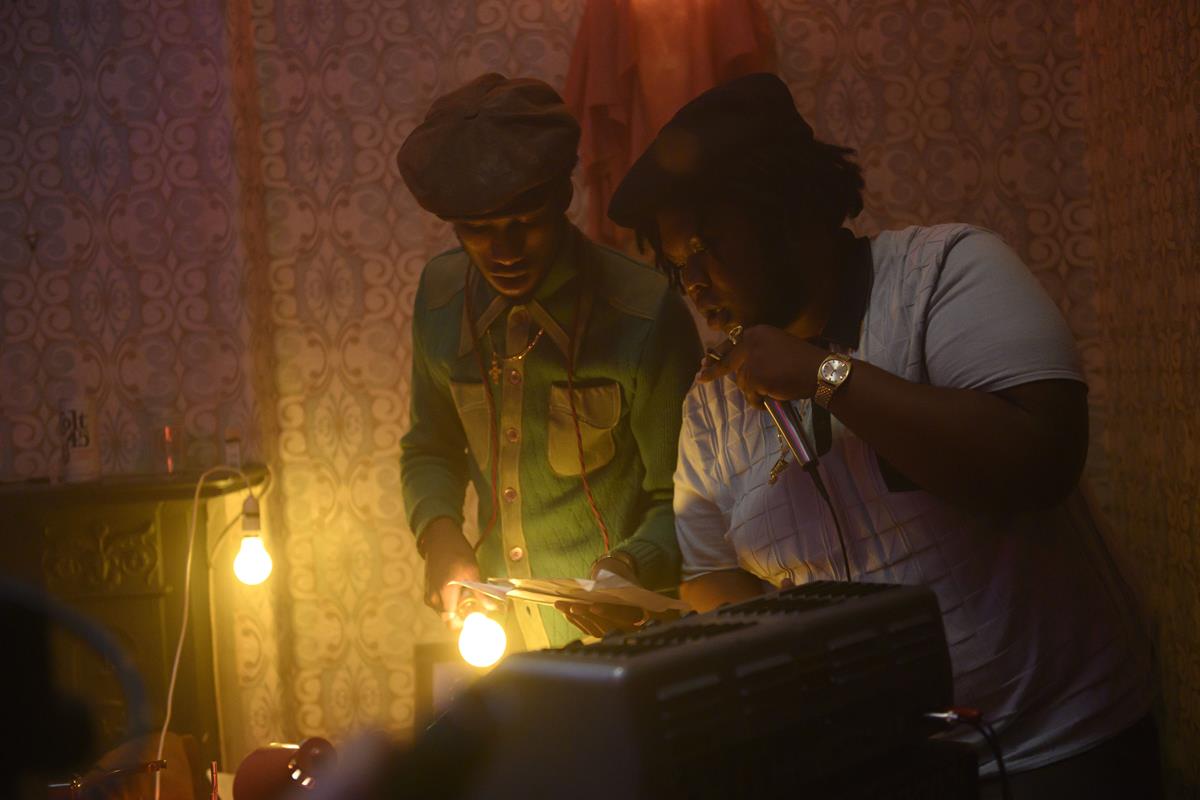
READ MORE: ‘Small Axe’ Cinematographer Steps Into Spotlight With Steve McQueen’s Film Series (The Hollywood Reporter)
Kirchner discussed the making of the Small Axe series in an interview with Robert Goldrich for Shoot. “As a storyteller, I try to in every project carve out some part of myself connected to the material,” he said. “Usually it’s little pieces here and there. With Small Axe, I wasn’t aware going in that it would be everything, my whole DNA, conscious and unconscious. There was a direct tether. After I finished shooting, I thought I would be burnt out and exhausted. Actually I felt really full. It took a long time for me to digest all of this food.”
The cinematographer called the opportunity to work with McQueen “the opportunity of a lifetime.” Not just to work “in this sphere and on that level,” but also “to help recognize myself, my history on screen in a way that I can continue it for others, handing this West Indian Black culture down to my peers and other people.”
There were no attempts to “homogenize the whole series in a visual way,” Kirchner underscored. “Cinema is about language. Each is its own film, with its own identity and language. The approach had to be completely organic to the story that needed to be told.”
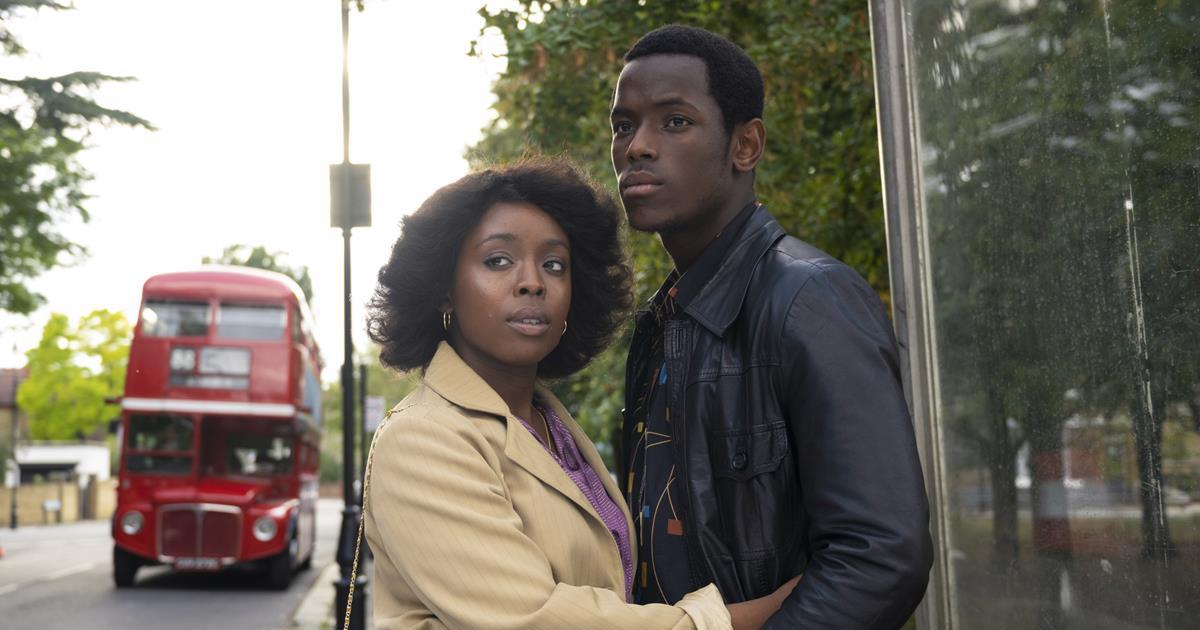
READ MORE: Cinematographers Shed Light On “Small Axe,” “The Handmaid’s Tale,” “The Nevers” (Shoot)
McQueen and Kirchner delved further into their dynamic on Small Axe during an episode of IndieWire’s Filmmaker Toolkit podcast. The director gave the DP the lion’s share of the credit for developing the visuals of Lovers Rock, noting that entire dance sequences were given simple two-sentence descriptions. “The key was creating a real mood and atmosphere on set with the ensemble cast, and then to let his young DP rip,” Chris O’Falt writes.
“It was in a lot of ways about interpreting the mode with a camera, and I think what Shabier has is a tremendous sense of balance,” McQueen explained. “You can throw him in the middle of something, like we did in the protest scenes in Mangrove, and you’re there. Therefore when you have someone with that ability, you can really move and go for it. There’s no difference between people in the frame and the person holding the camera.”
Kirchner compared his work on the series to being a jazz musician, “knowing that as he operated the camera he would need to go from point A to point B, but how he got there was more about feeling the moment and playing off the dancing cast,” O’Falt remarks.
McQueen loved that the dance scenes were about a Black cinematographer and Black cast “vibing off one another,” he said, adding, “as director, the less I do, the better I am as a director.”
In the video below, watch Kirchner and McQueen break down their approach to filming the dance scenes in Lovers Rock:
READ MORE: ‘A Celebration of All the Senses’: Inside the Filming of ‘Lovers Rock’ (IndieWire)
In an interview with Jazz Tangcay for Variety, Kirchner spoke about the ideas he had about color and capturing the mood and music in Lovers Rock:
“We didn’t want it to feel nostalgic to that specific period at all. We wanted colors to represent the mood. On a personal level, I looked at “Khalik Allah” which had some amazing nighttime photography.
‘I love everything Robby Müller has ever done, so we talked about that because he’s such a master at using color. We talked about using lighting in an expressive way that’s not heavy-handed. And depending on the scene, the song or the mood, the color on the dance floor shifts throughout.
“We had lilacs and pinks and then we’d move into a space that had cooler spikes. Towards the end, there was some hot red, something that was fire-like.”
READ MORE: How ‘Lovers Rock’ Cinematographer Captured Love, Black Culture and Community
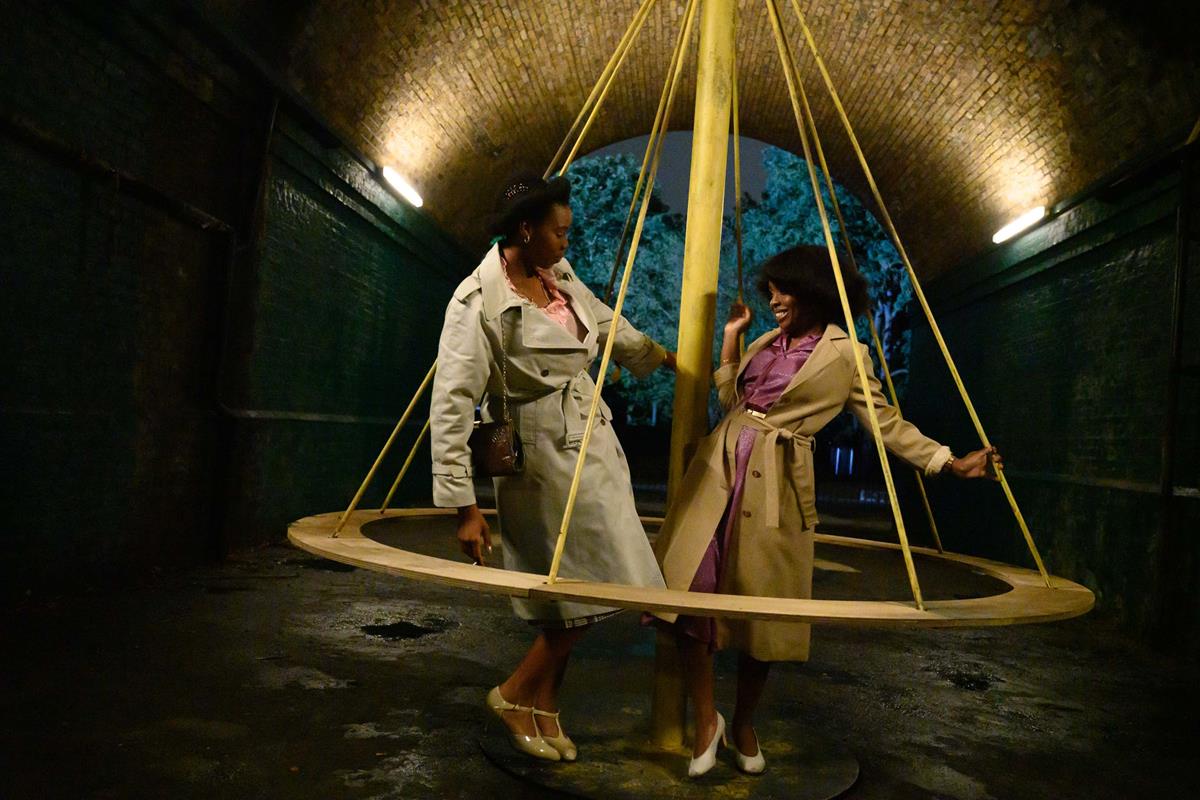
Kirchner says the stories he found in McQueen’s scripts were revelations to him. “A lot of West Indian people don’t know these stories,” he explains to Deadline Insider. “I put a lot of pressure on myself. I’m carrying this flag.”
Click on the image below to watch Deadline Insider’s “The Art of Story: Small Axe,” featuring McQueen and Kirchner in conversation about the making of the series:
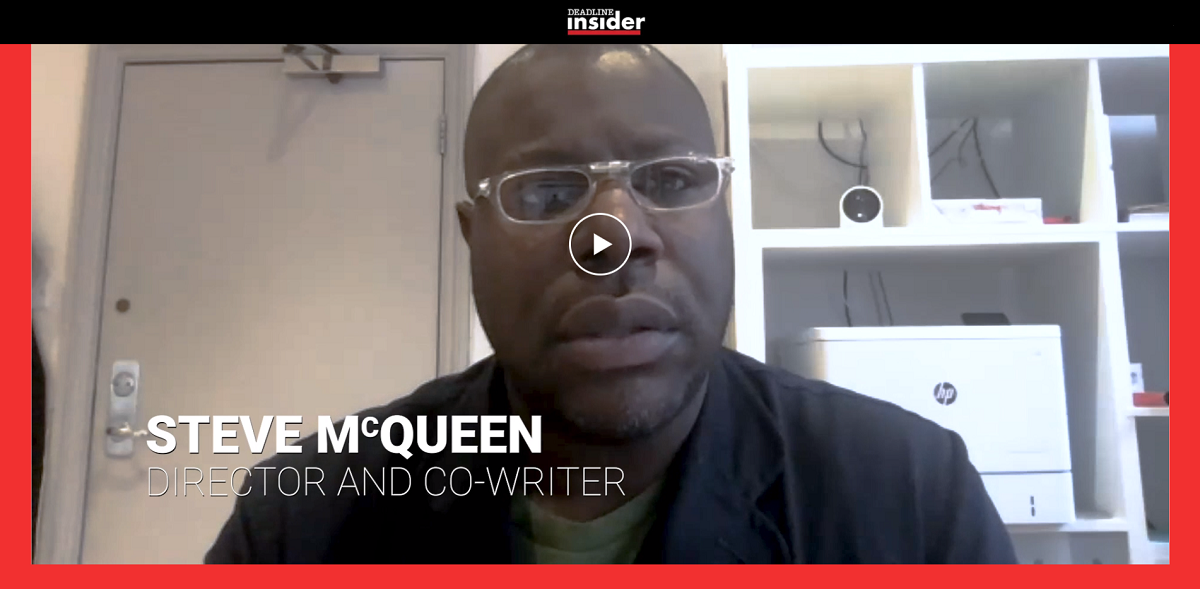
READ MORE: The Art of Story: Small Axe (Deadline Insider)
Want more? Watch and/or listen to the Film at Lincoln Center podcast episode with Small Axe director Steve McQueen in conversation with Dennis Lim, director of programming for Film at Lincoln Center and the New York Film Festival:
You can also watch the Producers Guild of America’s “A Conversation with Steve McQueen About His Series Small Axe” with Los Angeles Times film critic Justin Chang:



